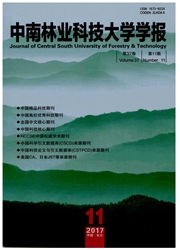

 中文摘要:
中文摘要:
为正确选择破壳方法,通过观察温-185核桃壳的断口形貌,依据断口表面微观细胞形貌的不同,将核桃壳的断口分为疏松区、致密区和过渡区三个区域,并采用数学分析的方法对这三个区域的微观结构进行了统计及描述。判断为核桃壳体断裂时体现为外层脆断内层韧性断裂行为,而在内外相连的区域呈混合断裂状态。致密区占有总体高度的55.6%,而疏松区占有24.2%,因此核桃在总体致密区细胞占有绝对优势,同时疏松区的细胞较致密区体积大,意味着在相同体积内疏松区较致密区细胞的数量明显少。因此温185核桃壳体在宏观上呈现了脆性特征,该结果可以为机械自动破壳方法提供参考。
 英文摘要:
英文摘要:
In order to correctly choose the method of breaking walnut shell, the fracture of wen-185 walnut shell was divided into three zones (loose zone, dense zone and the transition zone) through observing the fracture morphology and according to the different microscopic cell morphology of the fracture surface, and by adopting mathematical analysis method, the three zones' microstructure statistics and description were carried out. The results show that the fracture behaviors of the inner were failure and the outer layer were brittle failure, while the transition zone appeared a mixed fracture status of gliding and brittle; the dense zone's height occupied 55.6% of the total height of the shell, while the loose zone's occupied 24.2%, so the walnut had an absolute advantage of cells in dense zone, the loose zone's cell volume were bigger than that of the dense zone's. Therefore, the wen- 185 walnut shell shows a macroscopic brittle characteristic.
 同期刊论文项目
同期刊论文项目
 同项目期刊论文
同项目期刊论文
 期刊信息
期刊信息
